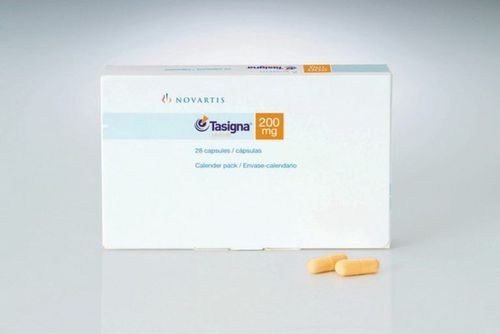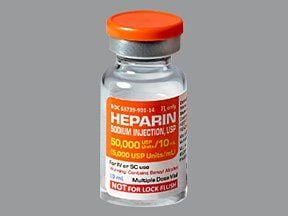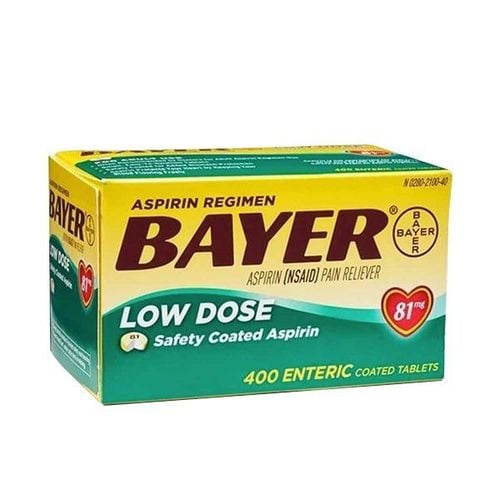This is an automatically translated article.
Pletaz belongs to the class of anticoagulants prescribed for the symptomatic treatment of painless walking in patients with Fontaine peripheral vascular disease or other ischemia. So how should Pletaz be used?1. What are the uses of Pletaz?
1.1. What is Pletaz? Pletaz belongs to the group of anticoagulants, with the main ingredient: Cilostazol 100mg. Excipients in 1 tablet: Carmellose calcium, Microcrystalline cellulose, Hypromellose, Magnesium stearate, Maize starch.The drug is made in the form of 100mg tablets.
Pletaz is recommended for adults. If necessary, it can be used in children but should be strictly supervised.
1.2. What are the uses of Pletaz? Cilostazol is a selective phosphodiesterase inhibitor, so it has vasodilating effects and prevents platelets from clumping together, limiting the formation of blood clots. The drug also plays a role in increasing exercise capacity in claudication, because too little oxygen is delivered to the muscles.
Pletaz is prescribed by doctors in the following cases:
Improve the ability to walk without pain in patients in stage II of peripheral vascular disease Fontaine does not improve pain despite despite the improvement in lifestyle. Ischemic treatment of diabetic chronic obstructive arterial syndrome, arteriosclerosis.
The drug is also used to prevent the occurrence of cerebral infarction.
2. How to use Pletaz
2.1 How to take Pletaz 100mg effectively To get the best effect, you should take the medicine about 30 minutes before breakfast and dinner. Swallow Pletaz 100mg tablets with a glass of water, do not break or crush the drug when taking it, the time of taking the medicine every day should be the same.2.2 Dosage of Pletaz 100mg The usual dose of Cilostazol is 100mg twice daily. Cilostazol should be taken 30 minutes before breakfast and dinner. Taking Cilostazol with a meal increases the maximum plasma concentration of Cilostazol, which may be associated with an increase in adverse reactions.
Dose reduction to 50 mg twice daily is recommended in patients receiving strong inhibitors of CYP3A4, eg certain macrolides, azole antifungals, protease inhibitors, or inhibitors strong CYP2C19 like omeprazole.
For the elderly: There are no special dose requirements for the elderly.
For children: Safety and effectiveness in children have not been established.
2.3 Overdose Information on acute overdose in humans is limited. The signs and symptoms that can be expected are severe headache, diarrhea, tachycardia, and arrhythmia.
Patient needs observation and supportive treatment. The stomach must be cleared by inducing vomiting or gastric lavage.
3. Contraindications of Pletaz
Patients with hypersensitivity to any of the ingredients or excipients listed above of Pletaz Severe renal impairment: creatinine clearance < 25 ml/min. Moderate or severe liver failure. Congestive heart failure. Pregnant. The patient has a history of tachyarrhythmias. Patients with a history of ventricular fibrillation, polyventricular extrasystoles, ventricular tachycardia with or without appropriate treatment or patients with prolonged QT interval. Patients prone to bleeding such as cerebral hemorrhage within the last 6 months, peptic ulcer, ... or uncontrolled hypertension, proliferative retinopathy due to diabetes. Patients with unstable angina, treated for myocardial infarction within 6 months, or undergoing coronary artery bypass surgery within 6 months. Patients receiving concomitant treatment with two or more anticoagulants or antiplatelet agents (eg, acetylsalicylic acid, heparin, clopidogrel, acenocoumarol, dabigatran, warfarin, rivaroxaban or apixaban).4. Notes when using Pletaz
Pletaz is prepared in oral form, not by other routes. After using Pletaz 3 months, if there is no effective treatment, you should consult your doctor for appropriate adjustment.Pletaz should be initiated by physicians with expertise and experience in the treatment of claudication. The effectiveness of the patient's treatment should be re-evaluated after three months of use to consider whether the drug should be discontinued in the event that the drug does not work or the clinical symptoms do not improve.
Patients treated with Pletaz should continue to implement lifestyle measures (such as eating right, exercising, and stopping smoking) in combination with other measures (such as lowering blood lipids and anticoagulation). platelet aggregation) to reduce the risk of cardiovascular events.
Risk of causing angina because Cilostazol can cause tachycardia, palpitations, low blood pressure. Closely monitor patients at high risk for cardiac adverse events.
During treatment may appear bleeding or bruising. Discontinue if retinal hemorrhage is detected.
Causes increased bleeding in surgery because Cilostazol has antiplatelet effect. Discontinue the drug 5 days before surgery.
A few cases of pancytopenia and aplastic anemia have been fatal. Caution should be exercised in combination with platelet aggregation inhibitors.
Pregnancy: Animal studies have shown reproductive toxicity but no specific data in humans are available. Therefore, Cilostazol should not be used in pregnant women.
Lactation: Cilostazol is excreted in breast milk in animal studies. Do not use on nursing mothers due to the risk of harm to the fetus.
Side effect dizziness affects the ability to drive and use machines. Be careful in this case.
Check the expiry date of the medicine printed on the box and on each pack. Do not use if the medicine has expired, the tablet is broken, watery or other changes in quality.
Be careful when using the drug, carefully read the information given by the manufacturer or follow the instructions of the doctor.
5. Side effects of the drug Pletaz
Blood and lymphatic system disorders: Bruising, anemia, prolonged bleeding time. Hemophilia, thrombocytopenia, agranulocytosis, leukopenia, leukopenia, pancytopenia, aplastic anemiaImmune system disorders: Allergic reactions
Cardiovascular disorders : Palpitations, tachycardia, angina pectoris, arrhythmia. Myocardial infarction, atrial fibrillation, congestive heart failure, ventricular tachycardia, syncope
Vascular disorders: Eye hemorrhage, epistaxis, gastrointestinal bleeding, unexplained bleeding, orthostatic hypotension . Hot flushes, hypertension, hypotension, cerebral hemorrhage, pulmonary hemorrhage, muscle hemorrhage, respiratory bleeding, subcutaneous hemorrhage
Respiratory disorders: Rhinitis, pharyngitis. Shortness of breath, pneumonia, cough. Interstitial pneumonia
Digestive disorders: Diarrhea, abnormal stools. Nausea and vomiting, indigestion, flatulence, abdominal pain. Gastritis...
Hopefully, the above sharing helps users better understand how to use Pletaz through information about ingredients, dosage, and how to take it. If the patient has any further questions, the patient can consult the prescribing physician.
Please dial HOTLINE for more information or register for an appointment HERE. Download MyVinmec app to make appointments faster and to manage your bookings easily.













